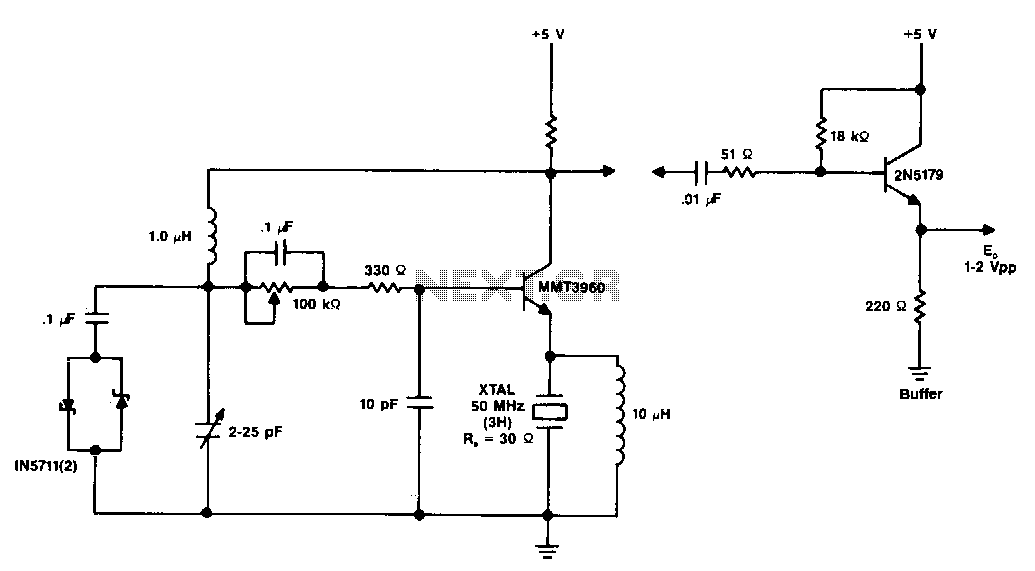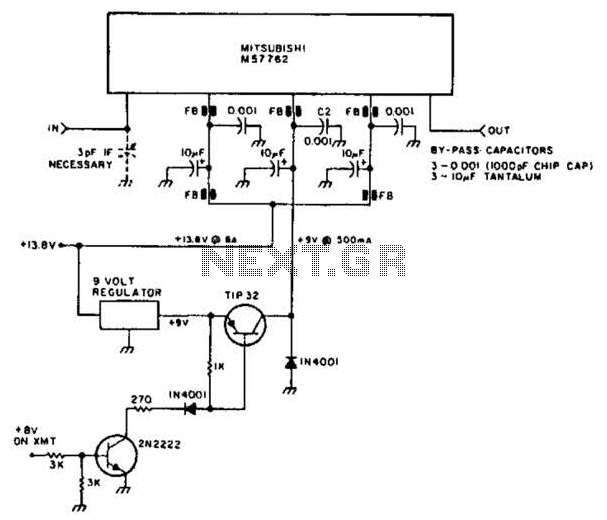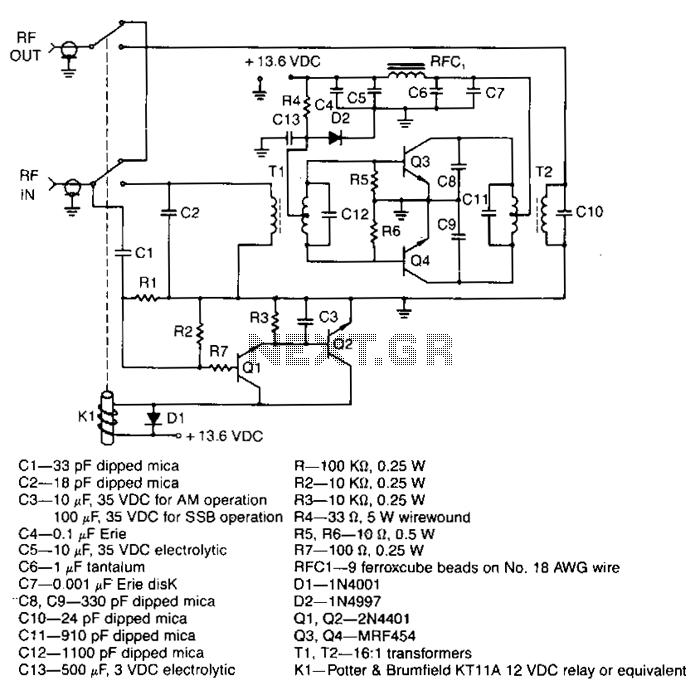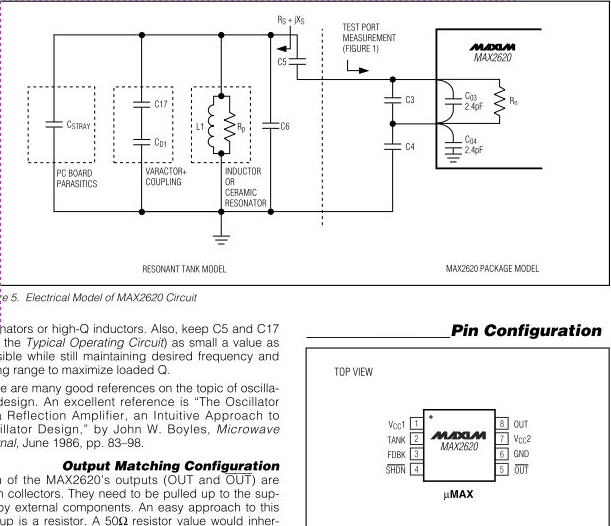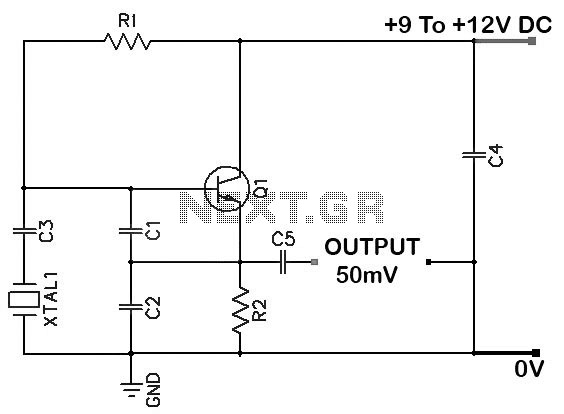
Taming the GTX 900 MHz
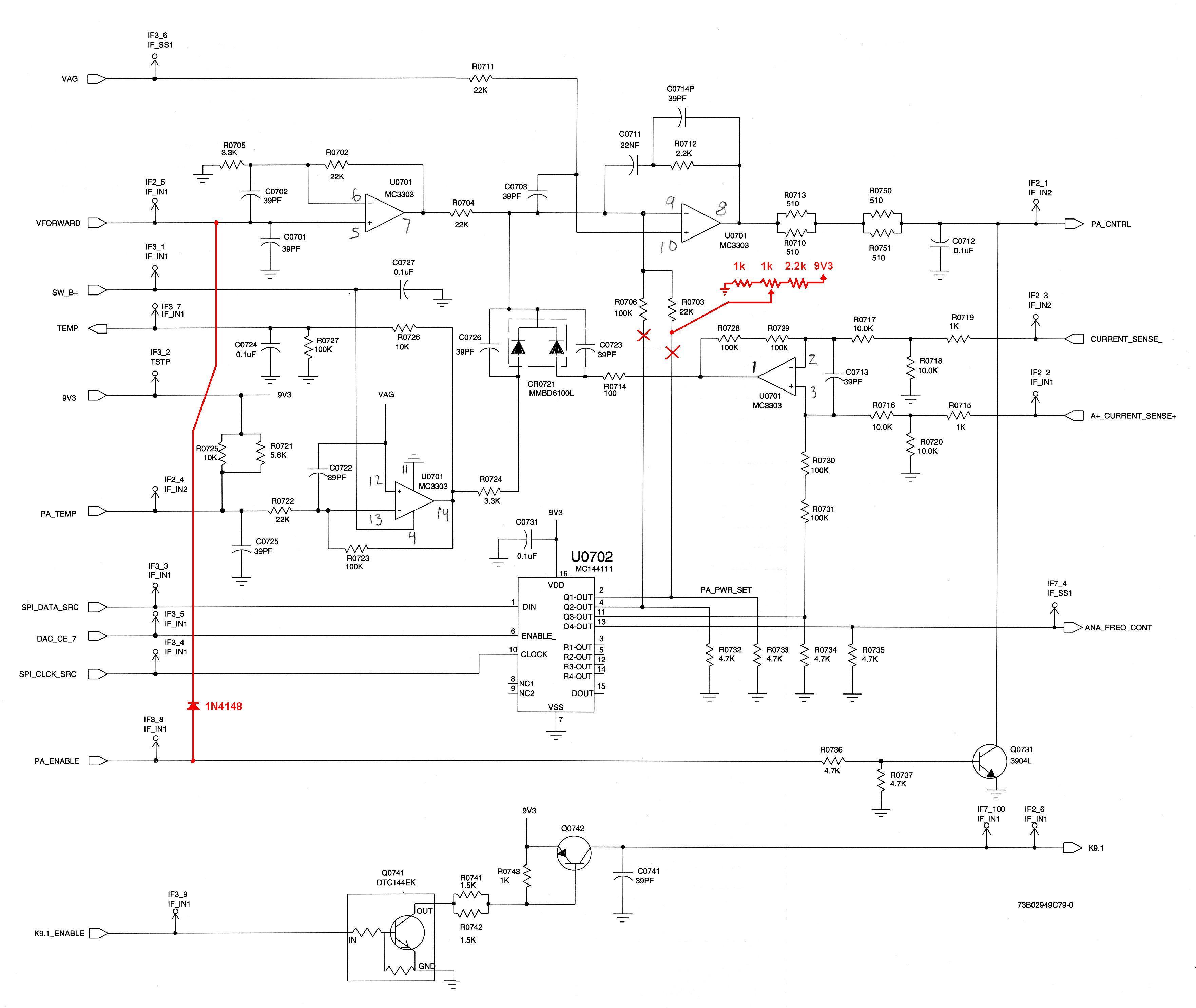
Many users of GTX 900 MHz radios for amateur repeaters are familiar with the inconsistent output power issue. After completing a full board replacement and adjusting deviation and output power, the radio performs well on test frequencies ranging from 896 to 902 MHz and 935 to 941 MHz, which are the bands for which the radio was designed. However, when transmitting on amateur frequencies, users may experience fluctuating output power levels such as 0.8 watts, 12 watts (the aligned output power), or 19 watts. For instance, one user observed 12 watts on 902.4125 MHz and 902.4875 MHz (two repeater input frequencies), 19 watts on 927.6000 MHz (a simplex frequency), 0.8 watts on 927.5000 MHz (another simplex frequency), and 19 watts on 927.4125 MHz and 927.4875 MHz (two repeater output frequencies). The output power can be stable on some channels while erratic on others. The radio operates correctly on the commercial frequencies it was designed for. The GTX radios, along with some other Motorola products, have 16 alignment points (sub-bands or frequencies) for power and deviation adjustments during board replacement or calibration. For the 900 MHz GTX mobile, there are eight alignment points in 1 MHz increments between 895.5 and 902.5 MHz, and between 934.5 and 941.5 MHz. When transmitting within these bands, the appropriate values are retrieved from a table to set the output power and deviation circuits. Issues arise when using out-of-band frequencies (902 - 935 MHz) because the radio (or RSS) does not have calibrated values for that frequency range. If it defaults to zero, the output power is 0.8 watts; if it uses a higher value, the output power reaches 19 watts. It remains unclear whether the RSS determines power and deviation values to send to the radio during programming or if the radio itself decides which values to use as channels change. This aspect is reserved for future exploration. Due to the radio's inability to maintain consistent output power on amateur bands, a manual power control adjustment is being added to ensure relatively constant output across relevant frequencies. A similar modification has been documented for a MaxTrac radio. While the MaxTrac can also be adjusted for deviation using a potentiometer, the GTX radios control deviation through a microprocessor that sends a digital value directly to the audio IC, precluding the addition of a potentiometer for deviation control. Attempts to utilize a "magic" code plug, which appears to better control output power on some radios, have not consistently yielded satisfactory results. In fact, one radio functioned well until additional channels were added, resulting in a return to erratic output power. This experience is not unique; others, such as Dave N1OFJ, have encountered similar issues and plan to undertake the modification soon. Another user initially reported success with the "magic" code plug, but after enabling scanning on certain channels, the output power reverted to its inconsistent behavior. A recent repair of a GTX mobile radio displaying an E06 error revealed that, despite meeting all specifications after a complete board replacement, the output power fluctuated between under 1 watt and over 15 watts when programmed with amateur frequencies, including two scanning modes. After removing the scanning modes from the list and disabling scanning, the code plug was rewritten to the radio, resulting in a stable output of 12 watts across all amateur frequencies.
The GTX 900 MHz radios are designed with specific operational parameters and alignment points that ensure optimal performance within their intended frequency ranges. The issue of erratic output power is primarily attributed to the lack of calibration for out-of-band frequencies. The radio's firmware utilizes preset values for power and deviation adjustments, which are effective within the designated bands but fail outside of them. This limitation necessitates the implementation of a manual power control adjustment, which allows users to stabilize output power across amateur frequencies where the built-in calibration does not apply.
To implement a manual power control adjustment, a potentiometer can be integrated into the radio's circuitry, allowing the user to fine-tune the output power as needed. This modification should be approached with caution, ensuring that it does not interfere with the radio's existing digital control mechanisms. The addition of this control not only enhances usability for amateur radio operators but also mitigates the frustrations caused by the inherent limitations of the radio's design.
Furthermore, any modifications should be documented thoroughly to assist other users who may encounter similar issues. It is advisable to maintain a comprehensive log of changes made to the radio, including any adjustments to the alignment points and the results of those adjustments. As the community continues to share experiences and solutions, the understanding of the GTX radios' behavior in amateur applications will improve, leading to better techniques for managing output power and deviation settings.Many of us who use GTX 900 MHz radios to work amateur repeaters are well aware of the erratic output power problem. You go through the complete board replacement procedure, adjusting the deviation and output power, and everything looks great on the test frequencies of 896 through 902 MHz, and 935 through 941 MHz.
After all, these are the bands that the radio was designed for and specified to work in. Then you program in and transmit on some amateur frequencies and you find various output power levels of 0. 8 watts, 12 watts (where you aligned the radio`s output power), or 19 watts. On one radio I have, I would get 12 watts on 902. 4125 MHz and 902. 4875 MHz (two repeater input frequencies), 19 watts on 927. 6000 MHz (a simplex frequency), 0. 8 watts on 927. 5000 MHz (another simplex frequency) and 19 watts on 927. 4125 MHz and 927. 4875 MHz (two repeater output frequencies). Depending on the radio, the power remains controlled on some channels, while others are always erratic.
Naturally, the radio still works just fine on the commercial frequencies it was designed for. The GTX radios (as well as some other Motorola products) have 16 alignment points (sub-bands or frequencies) for power and deviation that are adjusted during board replacement or calibration procedures. In the case of the 900 MHz GTX mobile, there are eight of these points, in 1 MHz increments, at frequencies between 895.
5 and 902. 5 MHz, and between 934. 5 and 941. 5 MHz. When the radio transmits in these bands, the appropriate values for that frequency are pulled from the table and used to program the output power and deviation circuits. A problem occurs when an out-of-band frequency is used (902 - 935 MHz); the radio (or RSS) has no idea what value to use, because the sub-bands aren`t calibrated for that frequency range.
If it uses zero, the radio puts out 0. 8 watts. If it uses a high value, the radio puts out 19 watts. I have not yet figured out if the RSS determines the power and deviation values and sends that information to the radio during programming, or if the radio itself makes the determination of which values to use as the channel is changed. That`s being saved for a future project. Since the radio is incapable of controlling the output power properly when used in the amateur band, I`ve finally given in and decided to add a manual power control adjustment, so the output power is relatively constant across the frequencies of interest.
There`s a similar article about doing this to a MaxTrac on this page. The MaxTrac can also be modified to control deviation in the same way, by adding a pot. However the deviation in the GTX is controlled by the microprocessor which sends a digital value directly to the audio IC, rather than through external analog circuitry. So you can not add a pot to control deviation on the GTX radios. I have tried using a "magic" code plug that, on some radios, seems to control the output power better, but even that has failed to produce consistent power levels, and on one radio it worked fine until I added a few more channels, then I was back to uncontrolled output power.
I know I`m not alone in this experience; Dave N1OFJ has a radio with the same problem and he will be doing this modification very soon. Another person also initially reported success with the "magic" code plug, but after he enabled scan on some channels, the output power reverted to its inconsistent behavior.
I recently repaired a GTX mobile radio that was displaying E06 all the time. I went through the entire board replacement procedure and the radio met all specifications. After programming it with amateur frequencies, including two scanning modes, the output power was either under 1 watt or over 15 watts, where it was previously making 12 watts. I removed the two modes from the scan list and disabled scanning, wrote the code plug back to the radio, and now it makes 12 watts on all amateur freque
🔗 External reference
The GTX 900 MHz radios are designed with specific operational parameters and alignment points that ensure optimal performance within their intended frequency ranges. The issue of erratic output power is primarily attributed to the lack of calibration for out-of-band frequencies. The radio's firmware utilizes preset values for power and deviation adjustments, which are effective within the designated bands but fail outside of them. This limitation necessitates the implementation of a manual power control adjustment, which allows users to stabilize output power across amateur frequencies where the built-in calibration does not apply.
To implement a manual power control adjustment, a potentiometer can be integrated into the radio's circuitry, allowing the user to fine-tune the output power as needed. This modification should be approached with caution, ensuring that it does not interfere with the radio's existing digital control mechanisms. The addition of this control not only enhances usability for amateur radio operators but also mitigates the frustrations caused by the inherent limitations of the radio's design.
Furthermore, any modifications should be documented thoroughly to assist other users who may encounter similar issues. It is advisable to maintain a comprehensive log of changes made to the radio, including any adjustments to the alignment points and the results of those adjustments. As the community continues to share experiences and solutions, the understanding of the GTX radios' behavior in amateur applications will improve, leading to better techniques for managing output power and deviation settings.Many of us who use GTX 900 MHz radios to work amateur repeaters are well aware of the erratic output power problem. You go through the complete board replacement procedure, adjusting the deviation and output power, and everything looks great on the test frequencies of 896 through 902 MHz, and 935 through 941 MHz.
After all, these are the bands that the radio was designed for and specified to work in. Then you program in and transmit on some amateur frequencies and you find various output power levels of 0. 8 watts, 12 watts (where you aligned the radio`s output power), or 19 watts. On one radio I have, I would get 12 watts on 902. 4125 MHz and 902. 4875 MHz (two repeater input frequencies), 19 watts on 927. 6000 MHz (a simplex frequency), 0. 8 watts on 927. 5000 MHz (another simplex frequency) and 19 watts on 927. 4125 MHz and 927. 4875 MHz (two repeater output frequencies). Depending on the radio, the power remains controlled on some channels, while others are always erratic.
Naturally, the radio still works just fine on the commercial frequencies it was designed for. The GTX radios (as well as some other Motorola products) have 16 alignment points (sub-bands or frequencies) for power and deviation that are adjusted during board replacement or calibration procedures. In the case of the 900 MHz GTX mobile, there are eight of these points, in 1 MHz increments, at frequencies between 895.
5 and 902. 5 MHz, and between 934. 5 and 941. 5 MHz. When the radio transmits in these bands, the appropriate values for that frequency are pulled from the table and used to program the output power and deviation circuits. A problem occurs when an out-of-band frequency is used (902 - 935 MHz); the radio (or RSS) has no idea what value to use, because the sub-bands aren`t calibrated for that frequency range.
If it uses zero, the radio puts out 0. 8 watts. If it uses a high value, the radio puts out 19 watts. I have not yet figured out if the RSS determines the power and deviation values and sends that information to the radio during programming, or if the radio itself makes the determination of which values to use as the channel is changed. That`s being saved for a future project. Since the radio is incapable of controlling the output power properly when used in the amateur band, I`ve finally given in and decided to add a manual power control adjustment, so the output power is relatively constant across the frequencies of interest.
There`s a similar article about doing this to a MaxTrac on this page. The MaxTrac can also be modified to control deviation in the same way, by adding a pot. However the deviation in the GTX is controlled by the microprocessor which sends a digital value directly to the audio IC, rather than through external analog circuitry. So you can not add a pot to control deviation on the GTX radios. I have tried using a "magic" code plug that, on some radios, seems to control the output power better, but even that has failed to produce consistent power levels, and on one radio it worked fine until I added a few more channels, then I was back to uncontrolled output power.
I know I`m not alone in this experience; Dave N1OFJ has a radio with the same problem and he will be doing this modification very soon. Another person also initially reported success with the "magic" code plug, but after he enabled scan on some channels, the output power reverted to its inconsistent behavior.
I recently repaired a GTX mobile radio that was displaying E06 all the time. I went through the entire board replacement procedure and the radio met all specifications. After programming it with amateur frequencies, including two scanning modes, the output power was either under 1 watt or over 15 watts, where it was previously making 12 watts. I removed the two modes from the scan list and disabled scanning, wrote the code plug back to the radio, and now it makes 12 watts on all amateur freque
🔗 External reference
